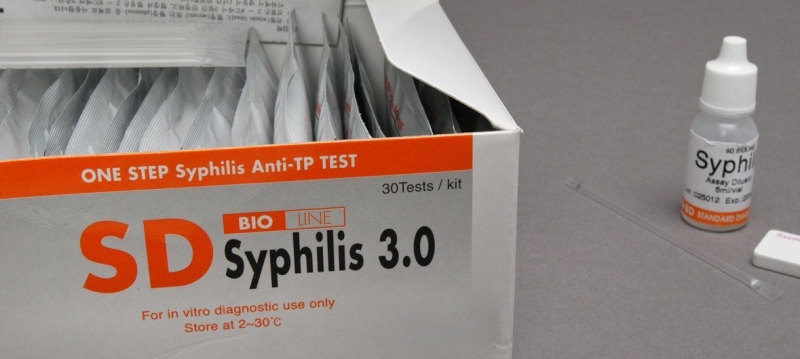
Many sexually transmitted diseases can be easily treated and prevented. WHO warns of rising incidence of sexually transmitted diseases Health
Rates of sexually transmitted infections (STIs) are rising in many parts of the world, according to a new report from the World Health Organization. The global epidemics of STIs, HIV, and viral hepatitis continue to pose significant public health challenges. They cause 2.5 million deaths annually.
In 2022, WHO member states set a goal of reducing the number of syphilis infections among adults tenfold by 2030, from 7.1 million to 0.71 million.
However, the number of new cases of syphilis among people aged 15-49 increased by more than 1 million in 2022, to 8 million. The sharpest increases occurred in the Americas and Africa regions. WHO also notes the slow rate of decline in the number of new infections with HIV and viral hepatitis. ;nbsp;
“Fortunately, we have made progress on a number of other fronts, including expanding access to critical health services, including diagnosis and treatment. “We have the tools we need to end these epidemics by 2030,” he added.
Growth incidence of sexually transmitted infections
More than a million people become infected every day with four STIs – syphilis, gonorrhea, chlamydia and trichomoniasis. The report notes that during the coronavirus pandemic, there was an increase in the incidence of syphilis among adults, including mothers, and an associated increase in the number of cases of congenital syphilis (523 cases per 100,000 births in year).In 2022, 230,000 people died from syphilis.
New data also indicate an increase in the incidence of multidrug-resistant gonorrhea. As of 2023, of the 87 countries that monitored antimicrobial resistance for gonorrhea, 9 countries reported increased levels (5 percent to 40 percent) of resistance to ceftriaxone, an antibiotic prescribed for gonorrhea.
WHO experts are monitoring the situation: they have updated treatment recommendations for this disease to reduce the spread of the multi-resistant strain.
Hepatitis and HIV
In 2022, there were approximately 1.2 million new cases of hepatitis B and almost 1 million new cases of hepatitis C. The number of deaths from viral hepatitis is estimated to have increased from 1.1 million in 2019 to 1.3 million in 2022, despite effective prevention, diagnosis and treatment tools.
The number of new HIV infections fell, but only slightly, from 1.5 million in 2020 to 1.3 million in 2022. Among five populations—gay men, people who inject drugs, sex workers, transgender people, and people in prisons and other closed institutions—HIV rates remain much higher than among the general population. An estimated 55 percent of new HIV infections occur among these groups and their partners.
HIV mortality remains high. There will be 630,000 HIV-related deaths in 2022. 13 percent of these are children under 15 years of age.
Progress in HIV treatment
Countries’ efforts to expand access to health services for the prevention and treatment of STIs, HIV and hepatitis are yielding enormous results. WHO has confirmed that 19 countries have been able to eliminate mother-to-child transmission of HIV and/or syphilis. Botswana and Namibia are on track to eliminate HIV, with Namibia being the first country to submit a dossier to assess progress in eliminating mother-to-child transmission of HIV, hepatitis B and syphilis.
Overall 76 percent of infected people worldwide are treated for HIV. However, 93 percent of people receiving treatment have a suppressed viral load. Diagnosis and treatment rates for hepatitis B and C have improved worldwide, but not significantly.
